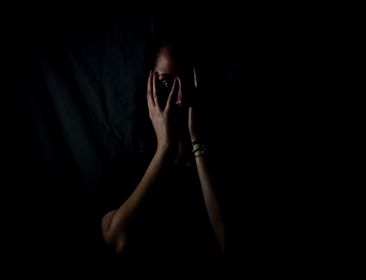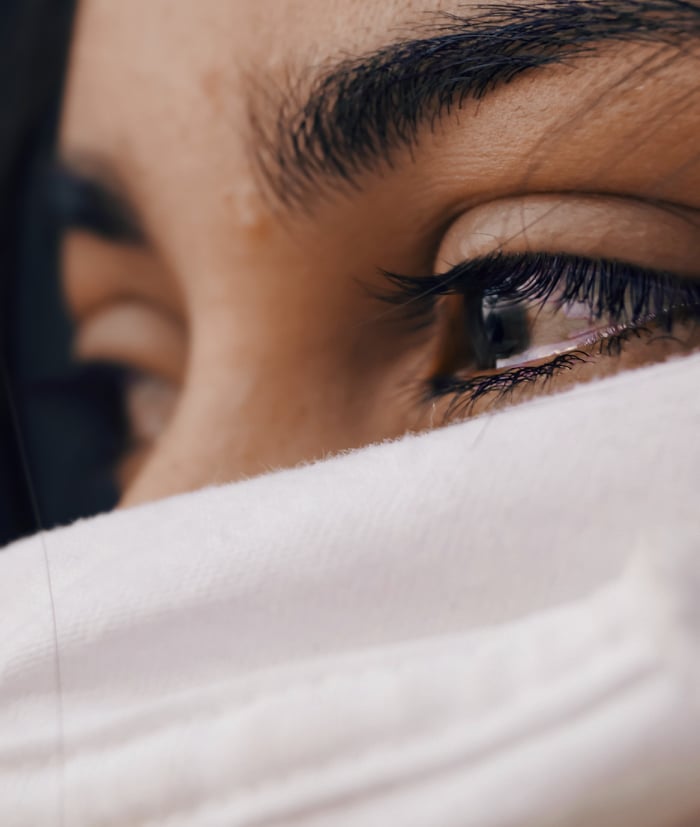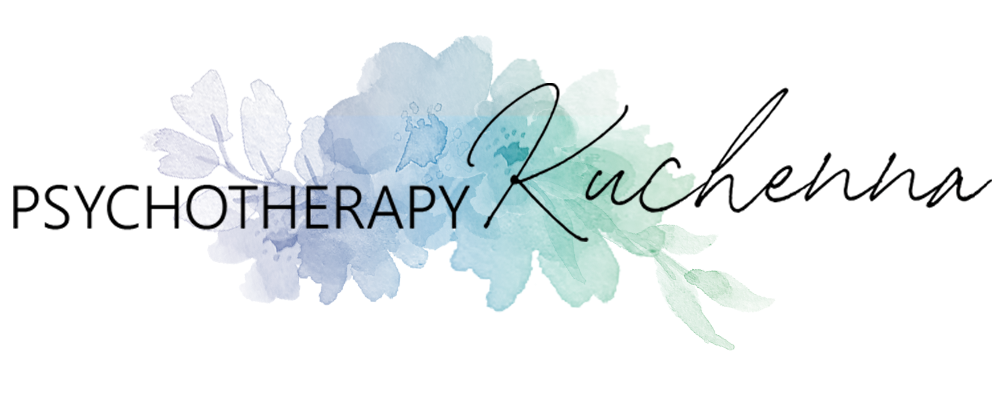Fear is one of the most powerful emotions.
It has a very strong effect on your mind and body.
The aim of this article is to give you more understanding between fear and anxiety. I thought it will be a good idea to give you some clarity on fear, also with regard to the situation with the COVID-19. The spread of coronavirus can be worrying and challenging and can affect your mental health. I hope you will find this article helpful and that it will give you at least some sense of control back.
FEAR AND ANXIETY
Fear can create strong signals of response when we are in emergencies. It can impact our lives when we are faced with non-dangerous events, like exams, public speaking, and a new job. So it’s a natural response to a threat that can be either perceived or real.
Anxiety is a term we use for some forms of fear that are usually to do with the thought of a threat or that something may go wrong in the future.
Fear and anxiety can last for a short time and then pass, but they can also last much longer and that can give you the feeling of being trapped or being out of control. In some cases fear and anxiety can take over your life, affecting your ability to eat, sleep, concentrate, travel, enjoy life, or even leave the house or go to work or school. This can hold you back from doing things you want or need to do, and it also affects your health.
Fear and anxiety are closely related to emotional phenomena originating in evolved human defense systems. However, recent research has started to unravel important differences between them.
In addition, fear and anxiety are clearly overlapping, aversive, activated states centered on the threat. Both of them involve intense feelings and strong bodily manifestations. However, they take somewhat different forms. Fear signifies dread of impending disaster and an intense desire to defend and protect oneself. Clinical anxiety, on the other hand, had been defined as an ineffaceable and unpleasant feeling of foreboding.
Don’t let your fear of what could happen, make nothing happen
THE DIFFERENCE BETWEEN FEAR AND ANXIETY
Epstein (1972) believed that fear is related to coping behavior, mainly escape and avoidance. However, when coping attempts fail (e.g., because the situation is uncontrollable), fear is turned into anxiety. He stated that “fear is an avoidance motive. If there were no restraints, internal or external, fear would support the action of flight. However, anxiety can be defined as unresolved fear, or, alternatively, as a state of undirected arousal following the perception of threat”.
In fear, it is a clear danger situated in space and time that must be dealt with; in anxiety, the nature and location of the threat are more incomprehensible and so are difficult to cope with by active defensive maneuvers. Fear may be focused on external sources, as in phobias. Anxiety may be situationally unclear, as in free-floating or generalized anxiety. Anxiety may come in the form of episodic panic attacks (i.e., as sudden emotional surges dominated by physical symptoms, sometimes with and sometimes without clear precipitants), which form the pillar of panic disorder (PD). It may be a relatively constant mental preoccupation with reasonable threats and dangers— associated with somatic symptoms—as in generalized anxiety disorder (GAD).
These descriptions suggest that fear and anxiety can be both considered as emotional states, suggested in a specific context and having a limited duration, and as personality characters, characterizing individuals across time and situations. (Spielberger, 1972; Rapee, 1991). It’s important to note that the differences between clinical and normal fear/anxiety include that the former is more recurrent and persistent; that its intensity is unreasonable, given the objective danger or threat; that it tends to paralyze individuals, making them helpless and unable to cope; and that it results in hindered psychosocial or physiological functioning. (Lader & Marks, 1973).
Essentially, fear is a functional emotion with a profound evolutionary origin, reflecting the fact that earth has always been
a dangerous environment to inhabit.
Our evolutionary history is obvious in the fears and phobias that we humans exhibit and willingly learn. We are more likely to fear events and situations that provided threats to the survival of our ancestors, such as potentially deadly predators, heights, and wide-open spaces, than to fear the most frequently encountered theoretically deadly objects in our contemporary environment, such as handguns. (Öhman & Mineka, 2001; Seligman, 1971).
“The fears we don’t face become our limits”
Expectancy Theory
Reis in his expectancy theory, states that human motivation to avoid a feared object is the purpose of two classes of variables, called expectation and sensitivity. Expectation indicates what the person thinks will happen when the feared object/situation is encountered (e.g., “I expect the plane will crash”, “I expect to have a panic attack during flight”, “I expect other people will notice my fear of flying”). The sensitivity indicates the reasons a person holds for fearing the anticipated event (e.g., “I can’t stand the thought of being handicapped”, “Panic attacks cause heart attacks”). Expectations (what one thinks will happen) and sensitivities (why one is afraid of the anticipated event) hypothetically provide the key for understanding human fears.
However, phobic avoidance motivation suggests the presence of both fear-outcome expectations (“I will fail the exam”; “the plane will crash”) and fear-outcome sensitivities (“It would be terribly embarrassing to fail the exam”, “I can’t stand the thought of dying”).
“May your choices reflect your hopes, not your fears…”
For instance, some people become overwhelmed by fear and as a result, want to avoid situations that might make them frightened or anxious. It can be hard to break this cycle, but there are lots of ways to do it. You can learn to feel less fearful and to cope with fear so that it doesn’t stop you from living.
Consequently, lots of things can make people feel afraid. Being afraid of some things can keep us safe (e.g. from fire). Fearing failure can motivate us to do well so that we won’t fail, but it can also stop us from doing well if the feeling is too strong.
It is important to note that what you’re afraid of and how you act when you’re afraid of something can vary per person. Just knowing what makes you afraid and why can be the first step to sorting out problems with fear.

The word ‘anxiety’ is used to describe worry, or when fear is nagging and persists over time. It is used when the fear is about something in the future rather than what is happening right now.
Physical symptoms of fear and anxiety
Anxiety is a word often used by health professionals when they’re describing persistent fear. The ways that you feel when you’re frightened and anxious are very similar, as the basic emotion is the same.
Above all, when people feel frightened or seriously anxious, the mind and the bodywork very quickly. People often experience symptoms like:
- Heartbeats very fast – maybe it feels irregular
- Muscles feel weak
- The stomach churns or your bowels feel loose
- Breathe very fast
- Feel frozen to the spot
- Find it hard to concentrate on anything else
- Can’t eat
- Have hot and cold sweats
- Very tense muscles
- Dry mouth
These things happen because the body is sensing fear, therefore it is preparing you for an emergency, so it makes your blood flow to the muscles, increases blood sugar, and gives you the mental ability to focus on the thing that your body perceives as a threat.
The long term anxiety may have some of the above symptoms as well as a more nagging sense of fear, and you may get irritable, have trouble sleeping, develop headaches, or have trouble getting on with work and planning for the future; you might have problems having sex and might lose self-confidence.
It’s important to note that early humans needed the fast, powerful responses that fear causes because they were often in situations of physical danger; however, we no longer face the same threats in modern-day living. However our minds and bodies still work in the same way as our early ancestors, and we have the same responses to our modern worries about bills, travel, and social situations.
The physical feelings of fear can be frightening in themselves – especially if someone is experiencing them and don’t know why, or if they seem out of proportion to the situation. So rather than alerting you to a danger and preparing you to respond to it, the fear/anxiety can kick in for any perceived threat, which could be imaginary or minor.
However fear may be a one-off feeling when someone is facing something unfamiliar. But it can also be an everyday, long-lasting problem, especially when you can’t put your finger on why. Some people feel a constant sense of anxiety all the time, without any particular trigger.
There are plenty of triggers for fear in everyday life, and you are not always aware of why you are frightened or how likely you are to be harmed. Even if you can see how out of proportion a fear is, the emotional part of your brain keeps sending danger signals to your body. And that brings us to look at the panic attack.
PANIC ATTACK AND PHOBIA
A panic attack is when someone feels overwhelmed by the physical and mental feelings of fear. People who have panic attacks often state that they find it hard to breathe, and they may worry that they’re having a heart attack or are going to lose control of their bodies.
A phobia is an extreme fear of a particular animal, thing, place, or situation. People with phobias have an overwhelming need to avoid any contact with the specific cause of anxiety or fear. The thought of coming into contact with the cause of the phobia makes you anxious or panicky.
Fear and anxiety can affect all of us every now and then. It is only when it is severe and long-lasting that doctors class it as a mental health issue. If you feel anxious all the time for several weeks, or if it feels like your fears are taking over your life, if the phobia is causing problems in your daily life, or if you are experiencing panic attracts then it’s a good idea to seek professional help.
CORONAVIRUS AND MENTAL HEALTH
Our mental health might be affected in certain ways during coronavirus time. You may notice some of the following: feeling stressed; becoming irritable more easily; increased anxiety; feeling insecure or unsettled, having trouble with sleeping; finding yourself excessively checking for symptoms, in yourself, or others; fearing that normal aches and pains might be the virus; feeling helpless or a lack of control; having irrational thoughts.
Remember that your fear and anxiety regarding COVID-19 can be reasonable and quite normal. The spread of the virus is unexpected, not known, and we don’t know when it will be over, (but we know it won’t last forever). Many people’s lives styles will change in certain ways over this period. However, rather than looking at the negatives and the loss we experience with the change and the challenge, we could look at what can we do and how can we use the time, to make it more doable and enjoyable.
It’s important to note that during this difficult time for everyone, there are many things you can do to mind your mental health.
How to take care of yourself during the COVID-19 time
- Keep a realistic perspective of the situation, based on facts.
- Stay informed but limit the news and social media- sometimes it is difficult to separate facts from rumors.
- Keep your health routines- exercise walks, regular sleep routines, healthy and balanced diet, avoid excess alcohol, read a book, etc.
- Pay attention to your needs and feelings.
- Stay connected to others- you can stay connected in many different ways e.g. social media, phone calls, video calls, emails, etc.
- Talk to your children- involving them in your plans to manage this situation is important. Give them the time and space to talk about the outbreak.
- Try to anticipate distress and support each other.

HOW TO PROTECT YOURSELF AND OTHERS FROM COVID19?
- Wash your hands properly and often.
- Cover your mouth and nose with a tissue or your sleeve when you cough and sneeze.
- Put used tissues into a bin and wash your hands.
- Clean and disinfect frequently touched objects and surfaces.
- Avoid close contact with people – keep a distance of 2 meters (6.5 feet) between you and others.
- Avoid crowded places, especially indoors.
- Stay at home if you are sick to help stop the spread of whatever infection you may have.
More information in relation to COVID-19 you can find on:
https://www2.hse.ie/coronavirus/
References:
American Psychiatric Association (APA). (2000). Diagnostic and statistical manual of mental disorders (4th ed., text rev.). Washington, DC: Author.
Epstein, S. (1972). The nature of anxiety with emphasis upon its relationship to expectancy. In C. D. Spielberger (Ed.), Anxiety: Current trends in theory and research (Vol. 2, pp. 291–337). New York: Academic Press.
Lader, M., & Marks, I. (1973). Clinical anxiety. London: Heinemann
Rapee, R. M. (1991). Generalized anxiety disorder: A review of clinical features and theoretical concepts. Clinical Psychology Review, 11, 419–440.
Reiss, S., & McNally, R. J. (1985). The expectancy model of fear. In S. Reiss & R. R. Bootzin (Eds.), Theoretical Issues in Behavior Therapr (pp. 107-122). New York: Academic Press.
Reiss, S., Peterson, R. A., & Gursky, D. M. (1988). Anxiety sensitivity, injury sensitivity, and individual differences in fearfulness. Behavior Research and Therafi, 26, 341-345.
Reiss, S., Peterson, R. A., Gursky, D. M., & McNally, R. J. (1986). Anxiety sensitivity, anxiety frequency, and the prediction of fearfulness. Behavior Research and Therapy, 24, l-8.
Spielberger, C. D. (1972). Anxiety as an emotional state. In C. D. Spielberger (Ed.), Anxiety: Current trends in theory and research (Vol. 1, pp. 23–49). New York: Academic Press.
https://www2.hse.ie/conditions/coronavirus/protect-yourself.html

